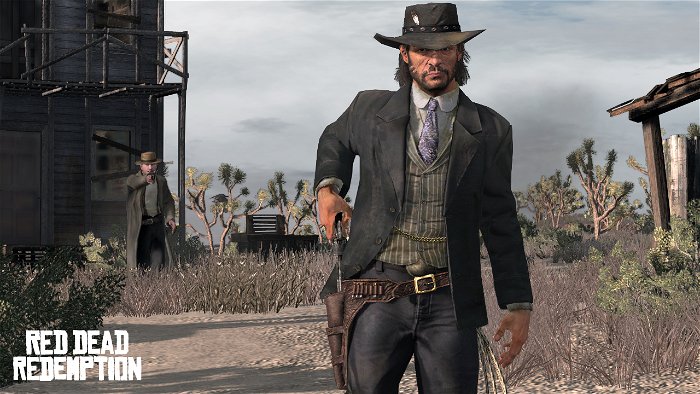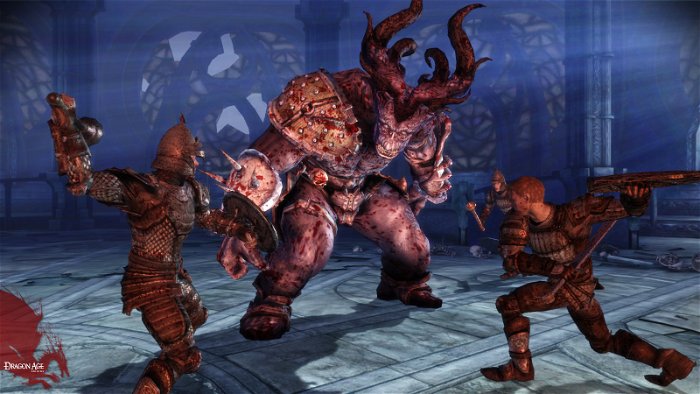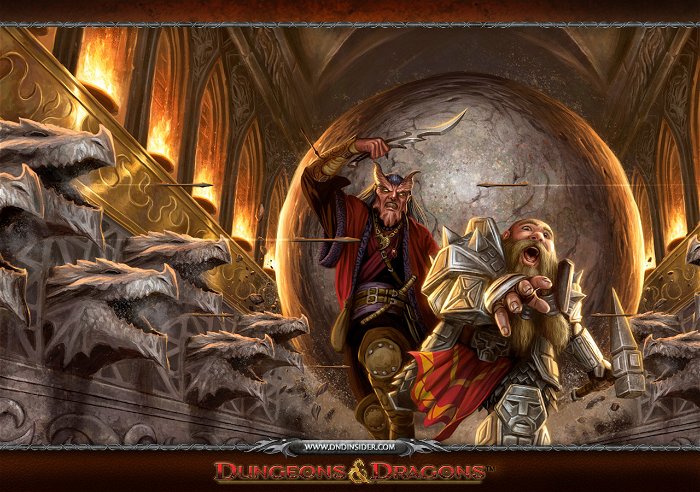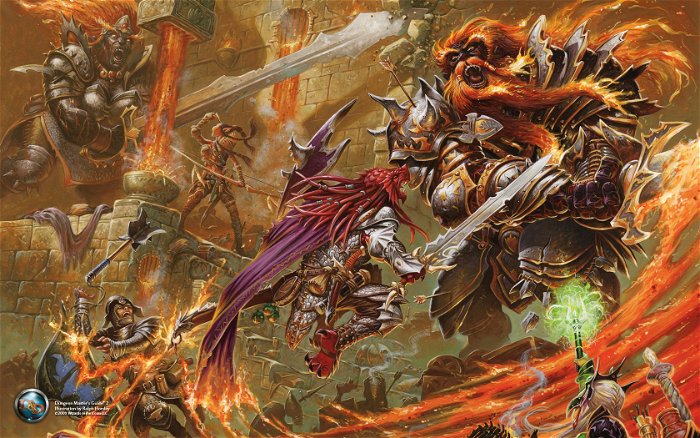Right, now games, as an interactive medium have the newest and most unique mechanism for delivering stories in a way that the audience has never experienced before. They can participate in the story, live through it, rather than simply be a passive audience member that absorbs the plot. Games as diverse as Red Dead Redemption, Mass Effect and The Elder Scrolls V: Skyrim, have allowed gamers to live the lives of reluctant cowboys, elite military star troopers, and fantasy warriors or wizards, experiencing a story that is told at their pace, on their terms, and, in some cases, with decisions they can make as to how the story unfolds. No other medium allows you to dislike a villain and then finally get an opportunity to personally do something about that character. Games can do it, but they are starting to hit certain limits on how far they can go in this direction, and they need to start looking at new mechanics to evolve further.
The Seed Is Planted
Right now when it comes to giving players a measure of interactivity in how the plot of a game unfolds, the most popular way to do it is through choice. Games still have a linear story for the most part, but at certain junctures, players have the opportunity to say—or do—something that will lead to different sets of consequences. These different choices can potentially add up, depending on the complexity of the game, and are thus normally thought of as “branching paths.” So a player that allows another character in the game to die may not receive the same ending—or even in-game benefits—as another player that decided to save the same character and allow them to live. In this way, at least in the more ambitious games, a sense of consequence develops that can result in serious emotional investment from the players. They feel that not only can they make choices, but those choices actually matter, and so they identify more strongly with the story they are experiencing. It’s a simple exercise in human psychology; people feel more engaged when they have more control.
This idea started out simple enough with the earliest adventure games, what are now known as “interactive fiction,” or text adventures. Players simply read the story, like any other, but then typed their actions in response to the story. It’s here that we see the earliest example of the “branching paths,” applied to narrative, where players were faced with multiple options of action or choices, and each choice had a pre-planned response. In some cases, this branching narrative was as simple as allowing a player multiple points of inquiry, asking questions of a non-player character in any order they liked, but once all the options had been used up, the game smoothly collapsed back into a fixed, linear narrative. Other choices were not quite so inconsequential. For example in the traditional “whodunit” text adventures from Infocom like Deadline and Suspect, players needed to gather clues, interrogate witnesses, and eventually make accusations and arrests. All of this was contingent on evidence the players gathered, and answers they received during questioning—which in itself had responses dependent on what the player had already uncovered. A suspect that might answer with cold indifference to one question would respond very differently when presented with evidence to back up the line of interrogation. This idea of giving players a choice in how to proceed with their actions would eventually find its way into the mechanics of everything from contemporary descendants of those early Infocom games like Heavy Rain or L.A. Noire, to more elaborate evolutions like the Dragon Age or Mass Effect series.
There is, however, one inevitable limiting factor to what has now become almost an industry standard for implementing choice into games. It requires more and more resources.
The Tree Branch Stops Growing
In the early days of adventure and RPG games that incorporated the idea of choice, it was a straightforward proposition; the games were largely text-based, so choices made were handled with more and more text. For every line of questioning that a detective had in Infocom’s The Witness, its designer, Stu Galley, simply had to sit at his computer and write out the dialog. If some players simply didn’t choose to pursue a particular question, they simply never got to read some text. As storage capacity, processing power and production budgets increased, games eventually moved on from lines of text to recorded dialog. Now, for “AAA” games, every time a player chose to question a character, they got a fully voiced response back. This, as to be expected, had a serious impact on the time and money required for games heavily focused on dialog. Actors had to be sourced, recording sessions had be scheduled, and it was no longer as simple as it was in the 80s where, if Richard Garriot, aka Lord British, suddenly remembered he’d forgotten to write a closing bit of dialog at a crucial plot point of the game, could simply go back into code, open up the file and type it in himself. Now, a last minute addition meant rescheduling voice talent and booking time in a studio to record the new addition, and then implement that back into the game. With the addition of full motion video, or pre-rendered or in-game cut scenes, this was further compounded by requiring more actors, a full film crew, and, in the modern era, motion capture facilities.
The result of all this added production value means that things have to be meticulously planned—and that plan must be rigorously followed—if a game is going to hit its release schedule. Improvising at the last minute is just not an easy thing to do, and will require a lot of coordination of resources to accommodate it. BioWare is probably the greatest example of this kind of heightened choice combined with high production value in the modern market. Games like Dragon Age: Origins present a wealth of decisions to the player, allowing them to determine everything from gender to a limited array of origin stories. Players can be a human from a ruling family, a dwarven prince, a victimized elf living in a ghetto, and more. From there, the player goes on to make numerous decisions, from the minor, like befriending or alienating party members, to major choices such as honoring or betraying an agreement for an alliance treaty. By the end of the game, the player may have created a story in which their hero dies valiantly, or has become one of the rulers of the land of Ferelden.


Anyone that attempts to document the number of decisions Dragon Age: Origins needs to process of would eventually have a flow chart of intimidating size. Every single one of these choices is crafted by the staff at BioWare and takes a sizable amount of resources and testing to ensure that no decisions are ignored, or that key pieces of dialog for one choice have somehow been forgotten about during the recording sessions with voice actors. The limits of BioWare’s ambitions are already evident in subsequent releases, like Dragon Age 2 and Mass Effect 3, where player decisions have actually been streamlined compared to the earlier titles. Even BioWare, the current king of “choice” in games, has realized that at some point, the amount of time, manpower and money required to create a vast array of player choice cannot go on indefinitely. As much as the developers themselves might like to give more choice to players in shaping the way their stories are told, it simply becomes too expensive using the current production model. In order to increase the amount of choice players experience in an interactive narrative, games either need bigger budgets, with longer development cycles, or else a new, unexpected direction needs to be pursued.
When In Doubt, Improvise
One solution to the massive resource requirements for planning out choices and consequences in interactive, plot heavy games is both simple and radical. Stop planning and producing these consequences and let the game itself decide how to respond to the actions that players take. In other words, start focusing on a narrative, virtual intelligence that can occupy the same role as a real world, table-top role playing game Dungeon Master.
When players get together for a round of Dungeons & Dragons, the Dungeon Master will plan in advance the characters, monsters and dungeon that the players will negotiate. All that’s put in place is that rough structure. The specifics of combat, of interaction with non-player characters, and even the exact solutions to certain puzzles or obstacles, is largely determined by rolls of the dice, or the judgment of the Dungeon Master when a player proposes an action that hadn’t actually been planned for. A good example of this would be a situation where an adventuring party finds themselves trapped in a pit. Perhaps the DM’s original plan called for the players to negotiate with their captor to perform some mundane side-quest. However, one player stumbles upon the idea of using a “feather” spell to lighten weight, casting that on a thief character, and having the fighter throw the thief up to either threaten the captor with release, or kill the captor and then find some other means of getting the remaining players up.


Despite the fact this was a solution that hadn’t occurred to the DM, if he decides that there’s a certain logic to the solution, he can simply judge that the action will be allowed, and then literally “make it up as he goes along,” from there. In a game, this kind of dynamic response is impossible. Even if a player came up with a novel solution like this to a problem, unless the developers had programmed in an extra “Come up with weightless plan” dialog option, recorded the appropriate response with voice actors, and then either include a fixed, non-interactive cut scene, or some interactive mechanism for determining where the thief lands, plus including the reactions of the captor, this idea, however logical it might seem, simply cannot be executed. The world in which the idea has been conceived simply can’t allow it to pass.
Of course, it’s one thing to come up with an idea like this. It’s quite another to start implementing. Where would we even begin with a game that could decide how to tell its story based on what the player is doing?
Back To The Page
Initially, the best place to try such experiments is where it all began, with interactive fiction. Text Adventures provide a relatively easy interface and most importantly, a fertile ground for inexpensive experimentation. We’re not yet at a point where a PC or a console could comfortably create new verbal dialog or facial animations in reaction to something a player did. Nor are these machines at a stage where they have all the interfaces required for some of the more unique solutions, such as talking your way out of a confrontation. Interactive fiction however, only needs one thing to do all this; words.
The first thing that needs to happen is that any sort of virtual Dungeon Master needs to be able to understand and respond to the player. The basic ground rules of written communication provide that backbone. The earliest text adventures could already do this to a certain degree. And the limited set of tools that an alphabet and grammar system provide still leave a lot of room for improvisation to express itself. At such an early juncture, the best way to achieve this is simply to see whether or not an artificial intelligence could pass the dramatic equivalent of the Turing Test; could a machine keep up with a player’s responses in a convincing enough manner that they were fooled into thinking they were just engaged in some kind of “chat” with another person that was reacting to their choices?


Once that foundation was achieved, and an A.I. “Dungeon Master” had sufficient mastery in improvisation that it could respond to new and surprising decisions from a player, it would be time to ramp up the “window dressing.” The vocabulary of language and story would require new additions, with vocabularies of movement, of facial expressions, of voices. If the game itself could learn how to become the “puppet master” to the various NPCs, to the physics of the world, and even the destructibility of environments, we could see an end the many kinds of artifice that we now take for granted in gaming. Players would no longer be impeded by locked doors, despite the fact that they had a rocket launcher that could easily blow such doors into splinters. Knee high rock formations would no longer prevent players from simply climbing over them to explore an intriguing piece of landscape a short distance away. If we actually conceive a solution to a puzzle that is logical and feasible, we could act on it, as opposed to getting a non-response when attempting to “combine” or “utilize” the objects in a way that wasn’t intended by the designers. But perhaps most important of all, if the apex of such a virtual DM were achieved, we could interact with characters in ways far beyond merely having three or four questions at a time to ask someone. If we were curious about their childhood, we could ask it. If we wanted an opinion on a particular subject, we could ask. If we knew their abilities were suited an original, unorthodox usage in a new situation, we could simply ask for cooperation. These characters would have their own priorities and agendas, with a willingness to act upon them. That alone would make the narrative of games a far richer experience.
No longer would we, as players, be confined to “What ifs” proposed in gaming forums about the different ways we could have handled a situation. We wouldn’t be tied to only the plans, obstacles and solutions the designers created for us. The game itself would be discovering the story at the same time that we were. It would take a lot of time to reach this stage, but if we got to the point where it no longer required an army tell a story, it would finally realize the potential that stories have in an interactive medium to shape themselves, dynamically, to the actions of the player.
This article appeared in CGM Spring 2012.






